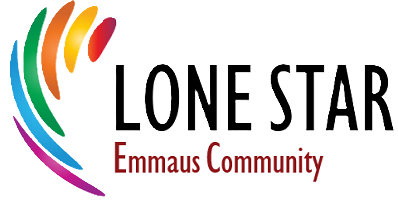Introduction
The Walk to Emmaus gets its name from the story in Luke 24:13-35, which provides the central image for the three-day experience and follow-up. Luke tells the story of that first Easter afternoon when the risen Christ appeared to the two disciples who were walking together along the road from Jerusalem to Emmaus. Like Christians and churches who are blinded by preoccupation with their own immediate difficulties, these two disciples’ sadness and hopelessness seemed to prevent them from seeing God’s redemptive purpose in things that had happened. And yet, the risen Christ “came near and went with them,” opening the disciples’ eyes to his presence and lighting the fire of God’s love in their hearts. As they walked to Emmaus, Jesus explained to them the meaning of all the scriptures concerning himself. Whey they arrived in Emmaus, Jesus “took bread, blessed and broke it, and gave it to them,” and their eyes were opened. They recognized him as Jesus, the risen Lord, and they remembered how their hearts had burned within them as they talked with him on the road. Within the hour, the two disciples left Emmaus and returned immediately to their friends in Jerusalem. As they told stories about their encounters with the risen Lord, Jesus visited them again with a fresh awareness of his living presence. The Walk to Emmaus is a spiritual renewal program intended to strengthen the local church through the development of Christian disciples. The program’s approach seriously considers the model of Christ’s servanthood and encourages Christ’s disciples to act in ways appropriate to being “a servant of all”.
About the Walk
The Walk to Emmaus experience begins with a 72-hour short course in Christianity, featuring talks by lay and clergy on the themes of God’s grace, disciplines of Christian discipleship, and what it means to be the church. The time is wrapped in prayer and meditation, special times of worship and daily celebration of Holy Communion. The Emmaus Walk begins Thursday evening and concludes Sunday afternoon. Men and women attend separate weekends.
During and after the three days, Participants are encouraged to meet regularly in small groups. The members of the small groups are encouraged and support one another in faithful living. Participants seek to Christianize their environments of family, job, and community through the ministry of their congregations.
The Upper Room, a ministry unit of the General Board of Discipleship of The United Methodist Church, sponsors the Walk to Emmaus and offers it through local Emmaus groups around the world. Although connected through The Upper Room to The United Methodist Church, The Walk to Emmaus is ecumenical.
Brief History
The Walk to Emmaus is an adaptation of the Roman Catholic Cursillo (pronounced cur-SEE-o) Movement, which originated in Spain in 1949. The original vision for the program to empower persons to transform their living and working environments into Christian environments. During the 1960s and 1970s, the Episcopalians and Lutherans, along with several nondenominational groups, such as Tres Dias, began to offer an experience similar to Cursillo. In 1978, The Upper Room of the General Board of Discipleship adapted the program for a primarily Protestant audience and began to offer it under the name The Upper Room Cursillo. In 1981, The Upper Room made further adaptations and changed the name of the program to The Upper Room Walk to Emmaus. In 1984, The Upper Room developed a youth expression of Emmaus called Chrysalis.
Structure and Organization
However, The Walk to Emmaus is ecumenical not only because members of many denominations participate, but because Emmaus seeks to foster Christian unity and to reinforce the whole Christian community. This is one of the great strengths and joys of the Emmaus movement.
The fact that Emmaus is ecumenical does not mean it is theologically indifferent. On the contrary, The Walk to Emmaus is designed to communicate with confidence and depth the essentials of the Christian life, accentuating those features that Christians have held in common.
The Upper Room Walk to Emmaus is a tightly designed event that is conducted with discipline according to a manual that is universally standard. Emmaus is offered only with the permission and under the guidelines of The Upper Room. This ensures a proven format and a common experience that should be trustworthy from weekend to weekend wherever Emmaus is being offered.
Each community is administered locally through its local Board of Directors. The program is administered globally through the International Emmaus office in Nashville, Tennessee, USA.
**Excerpted with permission from What Is Emmaus? by Stephen D. Bryant. Copyright © 1995 by The Upper Room.**

